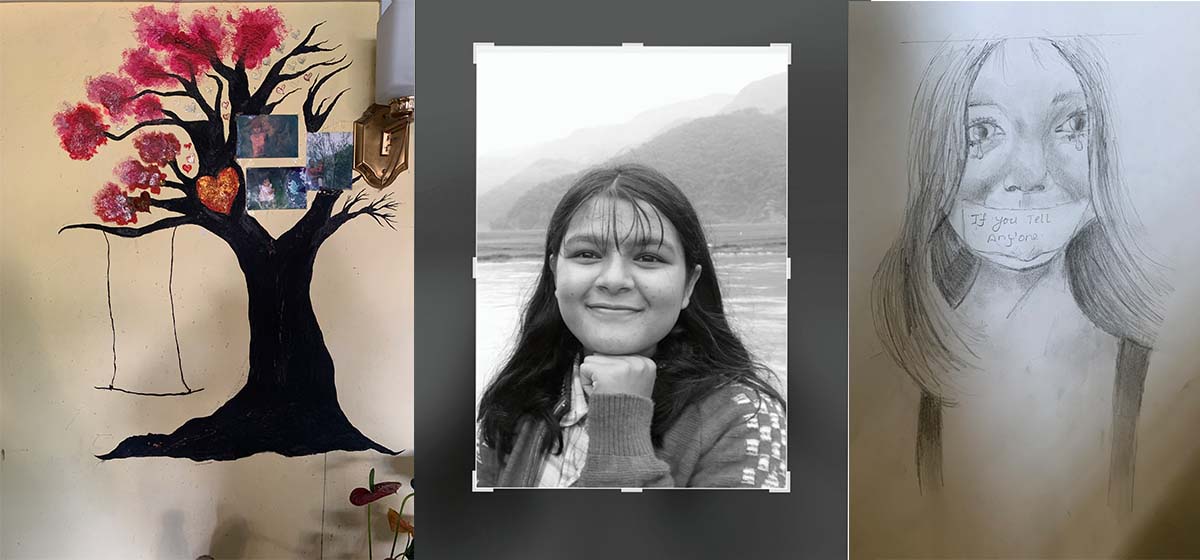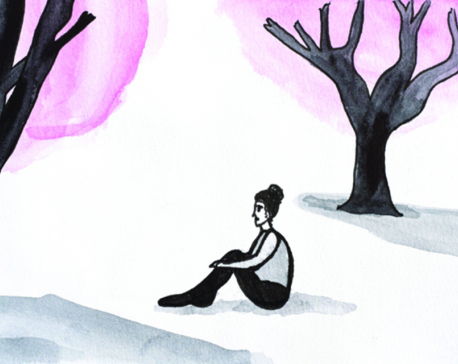
OR
Opinion
Sandhya: Revolution and Counter-revolution
Published On: January 5, 2022 06:30 AM NPT By: Hisila Yami


Hisila Yami
Hisila Yami, former Minister of Physical Planning, Tourism and Land Reform, is a senior leader of Janata Samajbadi Party.hisila.post@gmail.com
In July 2021, I suddenly heard Sandhya committed suicide in her house in Pokhara. She was only 21 years old. I was shocked. I was told she underwent an attempted rape by her paying guest landlord who was married and had his own children.
Every time I wake up in the cozy small room of a traditional house on the hillside of Pokhara, I feel the aura of Sandhya. Sandhya aptly means evening, between day and night.
If one is to remember the days of the People’s War it may mean between peace and war, between life and death, between light and darkness.
If one is to remember the Maoist Party that has recently concluded its general convention, it may mean between new and old and revolution and counter-revolution.
Sandhya went deaf at the age of four when her mother, Sarita, found that the nerve leading to her ear was shrinking. What made it all the more painful for Sarita was her second son Sangam, two years younger than Sandhya, too, went deaf after nine months when he had a high fever due to measles. Both events took place when the People’s War was going on, and when Raju Chhetri, Sarita’s husband was being detained and tortured for being a journalist, a journalist with a mission to expose the fallacy of the monolithic rule imposed on a multinational, multi-lingual and multicultural country. When Raju escaped from the military barracks, Sarita, too, became a full-time Maoist leaving behind her teaching job and her children in the hands of her in-laws.
With the peace negotiations in 2006 between the government and the Maoists, they got the opportunity to get their children operated on. It took nearly four years for them to hear and communicate. However, both were still getting counseling. They were shifted from a school for the deaf to a normal government school where they were learning socialization skills. However, COVID made their life difficult. They stopped going to school.
Meanwhile, the teachers at the deaf school had identified the talent in Sandhya for sketching and painting. She was drawing and painting during the COVID period. She wanted to hone her skills further. Sarita and Raju decided to send Sandhya to Kathmandu to be coached in painting. They found a woman painter in Patan who was running her own art gallery. She was placed in a paying guest house nearby the art gallery.
I, being an architect and a friend of Raju and Sarita, had gone to meet her in the art gallery. I found her happy and engaged in her sketching and painting. Along with her blossoming age she was discovering new skills in her painting. She showed off her paintings which were very colorful and unique. I encouraged her, knowing her past background.
In July 2021, I suddenly heard Sandhya committed suicide in her house in Pokhara. She was only 21 years old. I was shocked. I had been reading and writing on the effects of COVID on health, particularly on domestic violence. I had also read about how it was affecting differently-abled people, particularly women. I did not imagine it would come so close to my own friends. I was told Sandhya underwent an attempted rape by her paying guest landlord who was married and had his own children. Upon hearing this, her parents immediately called her back to Pokhara. She committed suicide within a week of her return to her home. Unable to bear the shock of losing her, both Sarita and Raju, who were hardcore Marxists, took to Ohm Shanti chanting to seek solace for their loss.
Just recently I had the opportunity to stay at their home for my party-building project in Gandaki Province. I was offered the cozy bedroom of the same Sandhya. The home of Sarita and Raju is reminiscent of Sandhya with her paintings adorning the walls and her artifacts hanging here and there. Every morning when I woke up I would see a huge oil painting on the wall framed just at the side of the bed. The painting made me contemplative. It depicts a teenager who is sitting in a meditative pose with rivers, a jungle, and animals around her. And there is a contemplative Buddha emerging out of a cloud as if blessing her. This painting was made to commemorate her memory. Indeed it did that job quite well. On each wall, there were her paintings and drawings which further enveloped the room with her aura. In a cabinet, there were half-empty nail polish bottles, sunblock creams, and oil bottles as if waiting to be emptied.
In one corner were stacks of her sketchbooks. I went through them and found that she had been drawing cartoons to still pictures to complex paintings. What caught my attention was a pencil sketch she had drawn of a teenage girl. Her eyes were full of tears and the mask she wore had some writing on it which said, ‘If you tell anyone…’ She looked fearful. I was particularly taken by a painting of a tree she had drawn on the wall. On the tree was a swing, an empty swing hanging off a branch. It was as if telling someone out loud...
Read the writing on the wall!
As I lay in her bed, Sandhya envelopes me, making me wonder about life and death, light and darkness, revolution and counter-revolution!
(The author is a former minister and can be contacted at hisila.post@gmail.com)
You May Like This

Tough going for Nepali students
Nepali students in Australia are vulnerable and are undergoing harshest of physical work, financial crisis, academic pressure and mental stress Read More...

The dream sellers
There is nothing wrong with the dreams and the dreamers. Only problem is when dreams turn into nightmares ... Read More...

Trump’s dollar weakness
Despite dollar appreciation, weak greenback may be in store. Far from making America great again, Trump seems to be hastening... Read More...







Just In
- NRB to provide collateral-free loans to foreign employment seekers
- NEB to publish Grade 12 results next week
- Body handover begins; Relatives remain dissatisfied with insurance, compensation amount
- NC defers its plan to join Koshi govt
- NRB to review microfinance loan interest rate
- 134 dead in floods and landslides since onset of monsoon this year
- Mahakali Irrigation Project sees only 22 percent physical progress in 18 years
- Singapore now holds world's most powerful passport; Nepal stays at 98th











Leave A Comment